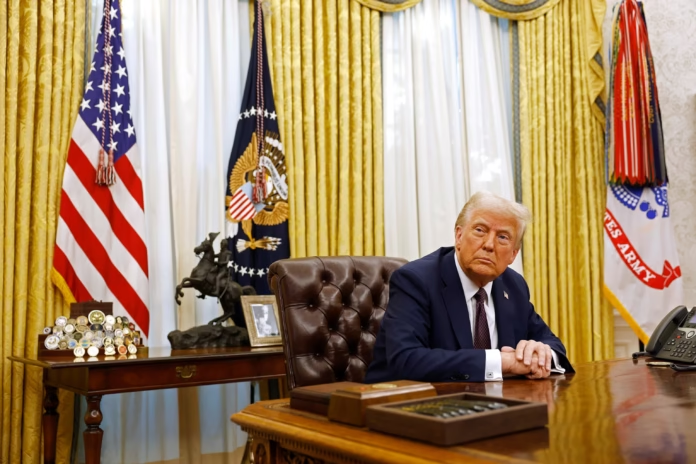President Donald Trump has renewed his support for high tariffs and promised a $2,000 tariff dividend for Americans. However, he said high-income earners would not receive the payment. The tariff dividend reflects revenues from his trade policies and aims to benefit average Americans.
Trump posted on Truth Social, saying, “People that are against Tariffs are FOOLS!” Moreover, he claimed tariffs helped make the United States “the richest, most respected country in the world,” with record stock market gains and high 401(k) balances.
In addition, the president argued that tariff revenues were helping reduce the $37 trillion national debt. He also highlighted growth in factories and manufacturing plants, presenting the tariff dividend as a reward for stronger domestic production.
Meanwhile, the U.S. Supreme Court is reviewing the legality of the broad tariffs imposed during Trump’s presidency. Hearings began on November 6. Justices questioned whether the administration acted lawfully. For example, Justice Amy Coney Barrett asked why tariffs were applied universally rather than selectively.
Furthermore, Treasury Secretary Scott Bessent defended the administration’s position, calling the matter an “economic emergency.” White House Press Secretary Karoline Leavitt added that the administration remains confident in its legal arguments. She also noted the case could shape future presidential authority on tariffs.
Nevertheless, details on the tariff dividend remain unclear. Officials have not provided a timeline or method for payments. Bessent suggested the benefit might come through tax cuts in Trump’s economic plan, called the “Big Beautiful Bill.” For instance, he cited measures like no tax on tips, overtime, Social Security, and auto loan deductibility as possible forms of the tariff dividend.
Additionally, the Supreme Court’s decision could influence U.S. trade policy long-term. Analysts said approval of broad tariffs would reinforce presidential authority in emergencies, whereas limits could restrict how future administrations use similar powers.
Therefore, Trump’s $2,000 tariff dividend highlights his focus on trade policy as a direct benefit to Americans. Investors and consumers are watching closely for details on timing and delivery.
Overall, the tariff dividend discussion underscores the intersection of trade, fiscal policy, and the courts. Consequently, it shows the broader economic stakes for U.S. citizens.
For more business updates, visit DC Brief.


